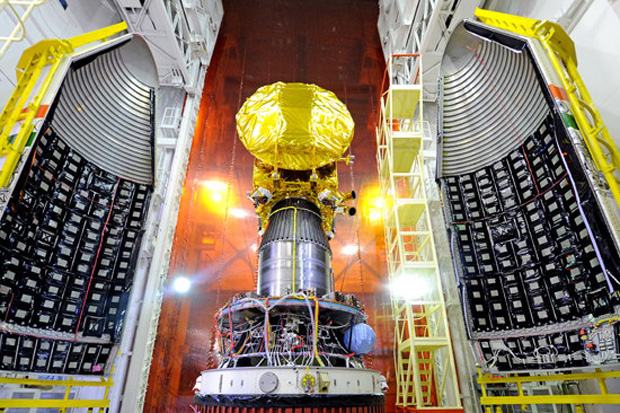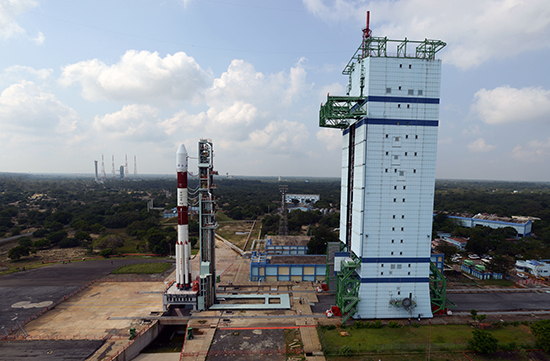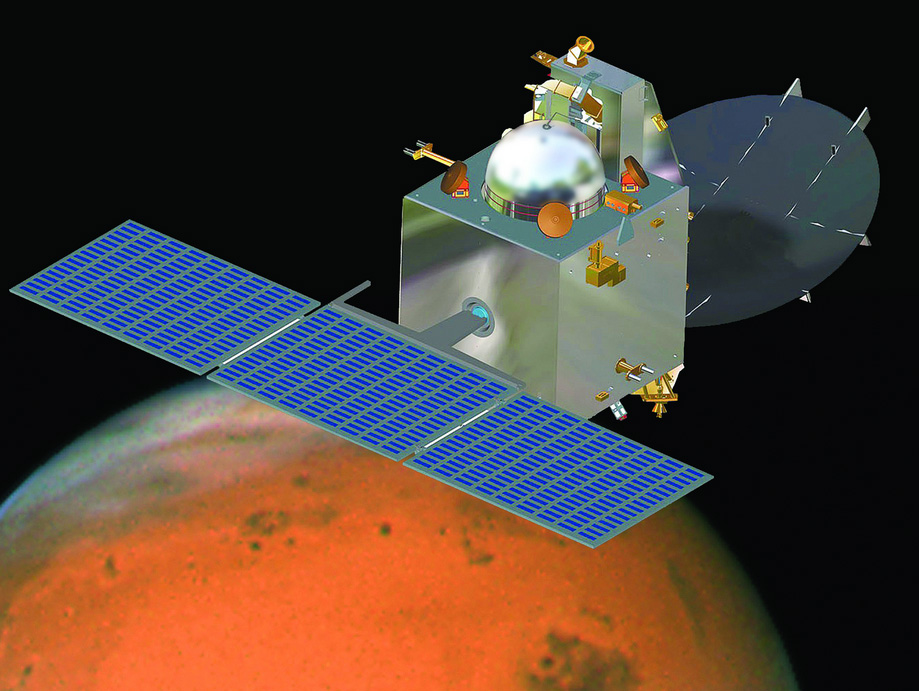India's First Mission to Mars Launching Tuesday

Editor's Note: India's Mars Orbiter Mission has successfully launched toward the Red Planet. Read our full story on the launch here: Liftoff! India's First Mars Probe Launches Toward the Red Planet
India is counting down toward the launch of its first mission to Mars on Tuesday (Nov. 5), a mission that — if successful —will place the country in an exclusive club of nations capable of sending probes to the Red Planet.
The Indian Space Research Organization will launch the Mars Orbiter Mission at 4:08 a.m. EST (0908 GMT) from a pad at the agency's Satish Dhawan Space Centre in Sriharikota, where the local time will be 2:38 p.m. in the afternoon.
You can watch India's Mars mission launch live online via Spaceflight Now. The webcast will begin at 3:30 a.m. EST (0830 GMT). You can also watch it directly from Spaceflight Now and the ISRO here.

India's 4.5 billion rupee ($73.5 million) Mars Orbiter Mission will send the Mangalyaan spacecraft (the name is Hindi for "Mars Craft") on an 11-month trek to Mars to study the planet's atmosphere and surface from orbit. The spacecraft carries five instruments to study Mars, but its primary purpose is to serve as a technology demonstrator for future Indian interplanetary probes, ISRO officials have said. [Photos: India's 1st Mission to Mars in Pictures]
"Orbiting Mars itself is a challenge," said ISRO chairman K. Radhakrishnan, according to the Times of India. "This is our first interplanetary mission. There will be bigger missions later."

The risks for the mission are high. It's tough to reach Mars with spacecraft, and more than half of the 40 missions launched to the Red Planet since 1960 have failed. India would be only the fourth country or space agency to deliver a probe to Mars after Russia, the United States and the European Space Agency if the Mars Orbiter Mission succeeds. By coincidence, NASA is planning to launch its own mission to Mars this month on Nov. 18.
Breaking space news, the latest updates on rocket launches, skywatching events and more!

The Mangalyaan spacecraft will launch toward Mars atop an enhanced version of India's Polar Satellite Launch Vehicle rocket. If all goes well, India's Mangalyaan spacecraft should arrive at Mars on Sept. 24, 2014, ISRO officials said.
The mission was initially slated to launch on Oct. 28, but was pushed back when bad weather delayed the ships that will track the spacecraft after it separates from its rocket, ISRO officials said.
As the centerpiece of India's Mars Orbiter Mission, the Mangalyaan probe is a 2,976 lb. (1,350 kilogram) spacecraft powered by solar arrays and packed with five instruments to study the surface and atmosphere of Mars. Those instruments include a color camera for photographic imaging, a spectrometer for surface composition and mineralogy analysis and a methane sensor.
The methane sensor in particular is a stand-out instrument as it is designed specifically to seek out methane gas in the Martian atmosphere. Methane has been a target of Mars scientists because while it can be created through geologic processes, it can also be a potential sign of microbial life.
India is not the only country with its eyes set on Mars.
NASA currently has two active rovers — the 1-ton Curiosity rover and smaller Opportunity —on the planet's surface. Orbiters from the U.S. and European Space Agency are also monitoring the planet from orbit.
NASA's next Red Planet mission, the Mars Atmosphere and Volatile EvolutioN (Maven), is slated to launch from Cape Canaveral, Fla., on Nov. 18. The $671 million Maven mission to Mars is built specifically to study the atmosphere of Mars in unprecedented detail.

NASA is also planning to launch the InSight lander to Mars in 2016 to dig deep underground on a mission to better understand the planet's core. The European Space Agency, meanwhile, is planning to launch two missions to Mars — an orbiter in 2016 and a rover in 2018 — as part of its ExoMars program. ESA has partnered with Russia on those missions.
India's first mission to Mars follows the country's Chandrayaan 1 moon orbiter mission, which helped detect evidence of water ice on the lunar surface. ISRO officials are also developing a second moon probe, Chandrayaan 2, as a follow-up lunar flight.
Email Tariq Malik at tmalik@space.com or follow him @tariqjmalik and Google+. Follow us @Spacedotcom, Facebook and Google+. Original article on SPACE.com.
Join our Space Forums to keep talking space on the latest missions, night sky and more! And if you have a news tip, correction or comment, let us know at: community@space.com.

Tariq is the award-winning Editor-in-Chief of Space.com and joined the team in 2001. He covers human spaceflight, as well as skywatching and entertainment. He became Space.com's Editor-in-Chief in 2019. Before joining Space.com, Tariq was a staff reporter for The Los Angeles Times covering education and city beats in La Habra, Fullerton and Huntington Beach. He's a recipient of the 2022 Harry Kolcum Award for excellence in space reporting and the 2025 Space Pioneer Award from the National Space Society. He is an Eagle Scout and Space Camp alum with journalism degrees from the USC and NYU. You can find Tariq at Space.com and as the co-host to the This Week In Space podcast on the TWiT network. To see his latest project, you can follow Tariq on Twitter @tariqjmalik.
